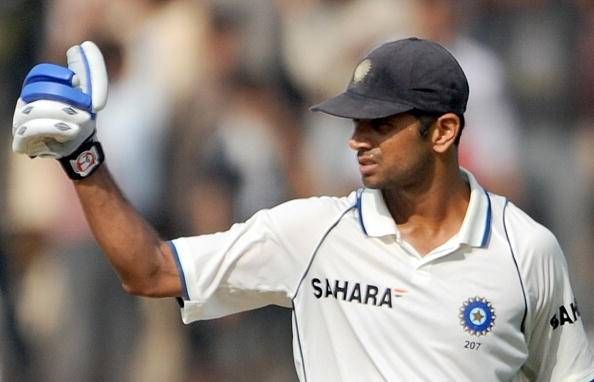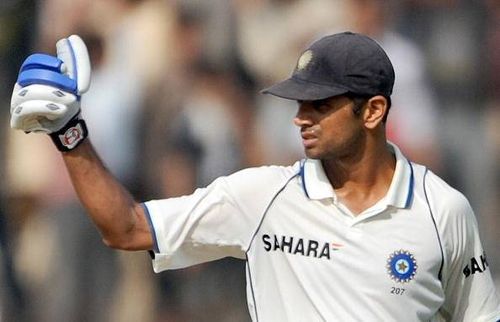
Rahul Dravid: The man who was always there for the team
He tucked the ball into the vacant midwicket space. Limping for a single, his resolve finally gave way to cramps and dehydration. It was clear that he had reached the end of his innings after six hours of toil. The 17-year-old Parthiv Patel, however, shouted and waved animatedly from the other end, egging him on for one more run. He mustered whatever was left of him, hobbled for one more run, and collapsed. Rahul Dravid had just completed his 100th run of the innings, his fourth consecutive ton in Tests.
Born in an era of talented Indian batsmen and a certain Sachin Tendulkar, Dravid made a name of his own, and even earned one: “The Wall”. He was the anchor, someone around whom the team revolved. Resolute and determined, he was a hardworking nut pushing himself to perfection, leaving and prodding, doggedly defending or delightfully driving, even hoicking and pounding the ball when needed.
He was the glue that could hold the innings together. He would keep long vigils at the crease, creating famous partnerships in the process. His 180 was equally enthralling when Laxman compiled a masterful 281, he played second-fiddle to Sehwag’s 254 enroute to their partnership of 410 against Pakistan in 2006, again when Sehwag was belting the South African bowlers on his way to a record 319.
Be it the 233&72* at Adelaide, 270 at Rawalpindi or 148 at Headingly, he crafted historical match-winning knocks abroad, all of them priceless essays of batsmanship. Scoring a doughty 81 on a dead Kensington Oval pitch or a fluent 217 at the Kennington Oval, the immaculate technique was on display all over the world. While the rest of the Indian batsmen were struggling to put bat on ball, he showed tremendous determination and patience to score three centuries in England in 2011. He carried his bat at The Oval, and showed how indispensable he was for the team when he came back to open on the same day.
Limited overs exploits
A young Dravid was deemed unfit for the limited overs format in 1996. Considered slow and one-dimensional, he went on to play more than 300 ODIs. In the process, he scored the second fastest fifty ever by an Indian, became the highest run getter in the 1999 WC, featured in two of the three 300-run plus partnerships ever and scored more than 10,000 runs. Playing in his only T20I, he smashed three consecutive sixes in one over. The poet could rap too.
Dignified and respected amongst his peers, he garnered praise from teammates and opponents alike. Not someone to shun responsibility, he batted everywhere from No.1 to No.7, opening on numerous occasions to weather the new ball, even fifteen years into his career. The team man that he was, he filled in to keep in place of an injured Nayan Mongia midway through a match in the 1999 World Cup.
He hadn’t kept in seven years, the last being for the state junior team. Again, when Ganguly wanted an extra batsman in the team, he readily put the gloves back on to keep for 70 more one day internationals, including a World Cup. “Ask him to walk on water for his team and how many miles he will ask” Harsha Bhogle once spoke of Dravid.
When the next generation of firebrand Indian players struggle to find their feet while coming up against swing and bounce abroad, and when a top order collapse exposes a fragile middle order, Rahul Dravid’s name will reverberate in the hearts of the Indian fans. Did someone say we need a new coach? Maybe, it’s time to walk on water one more time.
